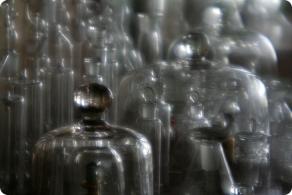This is the P2PU Archive. If you want the current site, go to www.p2pu.org!
Potable Water Treatment Study Group

Potable Water Treatment Study Group
This course is part of the larger syllabus for my personal learning project called "a handmade master's" in which I study ecological design. I'd like to add a social element to my project and learn this material with others. What's my role? To facilitate discussions around readings and coordinate tasks and projects.
Summary
This unit from Open University's open courseware (OCW) will guide us through the continuous cycling of water between land, open water surfaces and the sea before moving on to an overview of the water treatment and supply process. We'll add weekly activities along the way, like drawing how water treatment works, debating hi-tech vs. low-tech water treatment, sharing innovations, and designing own our theoretical treatment systems for a final project.
Participants are expected to take charge of their learning a contribute to the course on free will. There is no instructor and no grades. There is no time commitment to this course. Come in a join the conversations as they happen. If you are simply interested in learning the course material on your own, you are free to do so with The Open University anytime you like. Their course materials are free and open.
Note on Open U content: Except for third party materials and otherwise stated, content all content from Open University's open courseware is made available under a Creative Commons Attribution-NonCommercial-ShareAlike 2.0 Licence (CC-By-NC-SA).
Learning objectives
After studying this unit we should be able to:
-
describe the operation and mechanisms of the hydrological cycle;
-
list and describe the major physical, chemical and biological characteristics of clean fresh water, and explain their effects on aquatic organisms;
-
explain the mode by which potable water is produced through the processes of screening, microstraining, aeration, coagulation and flocculation, sedimentation, flotation, filtration and disinfection;
-
explain how the issues of nitrates, trace organics, fluoridation and plumbo-solvency can be dealt with in potable water supply;
-
describe the main desalination processes used to produce potable water from saline or brackish sources;
-
explain the function of transmission mains, ring mains, service reservoirs and water towers, and discuss the merits and disadvantages of different types of piping materials.


Comments
I'm taking two courses
I'm taking two courses already this semester, but this topic is of great interest to me. Thanks for offering it! If you offer it again, I may take it. Seriously, I'm struggling with myself right now to not take this. I have to be careful not to overload my plate.
I hope this course goes well!
me 2
me 2
Only thus, through this
Only thus, through this circuit manages to purify water and we still benefit water quality. Without this circuit everything would be harmful.
from miere de padure